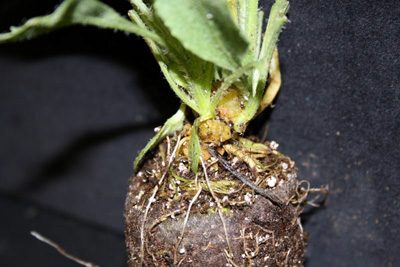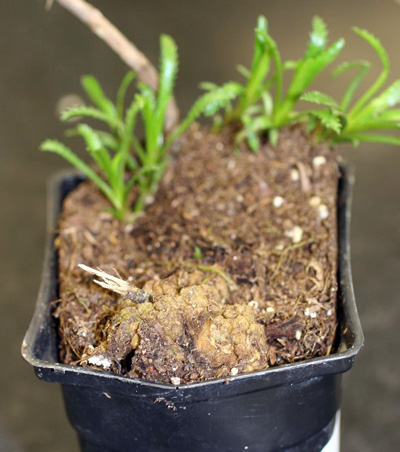Managing crown gall
Editor’s note: This article is from the archives of the MSU Crop Advisory Team Alerts. Check the label of any pesticide referenced to ensure your use is included.
Agrobacterium tumefaciens is the bacterial pathogen that causes crown gall. Crown gall is well known as a disease of woody ornamentals and tree fruits, but it can also affect herbaceous perennials. Producers of perennials, especially those propagated by cuttings, should be aware of the disease and the symptoms it causes. The bacterium typically induces plants to produce an abnormally large number of cells that make up the gall. Galls range from pea-size to larger than one foot in diameter and are produced on roots, stems and foliage.
Agrobacterium tumefaciens is soil borne and can survive in soil without a host for several years. The bacterium enters plants through wounds, often those made by cultural practices such as grafting, pruning or taking cuttings. Once inside the host plant it induces gall formation. Larger galls may destroy vascular tissue of the plant, causing dieback or plant death. With time gall tissue breaks down, releasing A. tumefaciens back into the soil or onto other host material.
Good sanitation is an important component of crown gall disease control. Equipment used to prune plants or to take cuttings should be thoroughly disinfested. Symptomatic plants should be removed and destroyed. Greenhouse plants that are in close proximity to those with galls should also be removed and destroyed; these may be infected although they are not yet showing symptoms.
There are several disease control products available for crown gall control; these contain a strain of Agrobacterium that is antagonistic toward the gall causing pathogen. The efficacy of these products varies somewhat with the type of plant material being treated. These products are meant to protect healthy plant material; they do not eradicate current infections. Copper-based fungicides can be used to help limit spread, but again these will not eradicate current infections.



 Print
Print Email
Email




